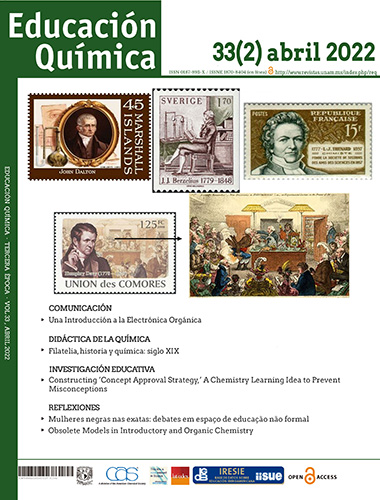Problem-solving methodology in chemical technician education
Contenido principal del artículo
Resumen
In this article, we present the analysis of a problem-solving activity performed during a chemical technician course. We examine the contributions of the teaching-learning sequence when implemented in the development of conceptual, procedural, and attitudinal learning, focusing on environmental issues related to pesticides. In our investigation, we also report the perception of students regarding the teaching-learning sequence. The research was carried out in a public school in the city of Porto Alegre, Brazil, involving 29 students of the chemical technician course. The students solved problems created to address different approaches concerning pesticides. Data were obtained by the analysis of the researchers’ field diaries and questionnaires of the class in which the students participated in the problem-solving activity. The results showed that the teaching-learning sequence favoured conceptual, procedural, and attitudinal learning related to problem-solving and the environmental hazards that pesticides can cause. It was observed that the problem-solving methodology favoured the students’ autonomy, which is the ability to self-govern, to make one’s own decisions, and to be critical and reflective.
Detalles del artículo
Citas en Dimensions Service

Educación Química por Universidad Nacional Autónoma de México se distribuye bajo una Licencia Creative Commons Atribución-NoComercial-SinDerivar 4.0 Internacional.
Basada en una obra en http://www.revistas.unam.mx/index.php/req.




